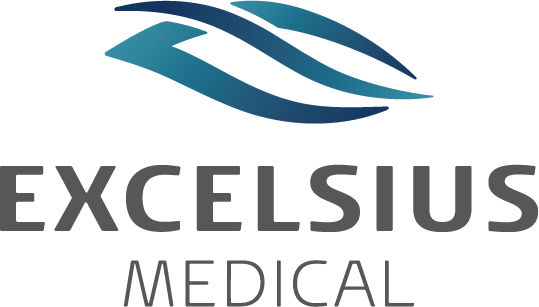5 Essential Benefits of Light Surgical Innovations for Modern Healthcare
In recent years, the healthcare industry has witnessed remarkable advancements in surgical procedures, particularly through the adoption of light surgical innovations. According to a report by the World Health Organization, minimally invasive surgeries are expected to increase by 25% globally by 2025, driven by technological advancements and a growing emphasis on patient-centered care. Light surgical innovations not only enhance precision and reduce recovery times but also significantly lower the risk of complications associated with traditional surgery. A study published in the Journal of Medical Devices highlighted that surgeries utilizing light technologies resulted in 30% fewer postoperative complications compared to conventional methods. As healthcare providers strive to improve patient outcomes, understanding the essential benefits of light surgical methods has become paramount in shaping modern healthcare practices.

Advancing Patient Safety: How Light Surgical Innovations Reduce Complications by 30%
Light surgical innovations are transforming modern healthcare by significantly enhancing patient safety. According to recent studies published in leading medical journals, the adoption of advanced light-based technologies in surgeries has been shown to reduce complications by as much as 30%. This improvement is primarily due to the precision these tools offer, allowing surgeons to perform minimally invasive procedures that lead to shorter recovery times and less trauma compared to traditional surgical methods.
Research from the World Health Organization indicates that surgical complications can lead to extended hospital stays and increased healthcare costs. By integrating light surgical innovations into routine practices, hospitals are not only improving patient outcomes but also optimizing resource utilization. For instance, a report from the American College of Surgeons highlights a notable drop in infection rates associated with the use of advanced imaging techniques in surgeries, underscoring the role of these innovations in fostering safer surgical environments. As we continue to embrace these cutting-edge technologies, the future of surgery looks promising, with a clear focus on enhancing patient safety and reducing overall healthcare burdens.
5 Essential Benefits of Light Surgical Innovations for Modern Healthcare - Advancing Patient Safety: How Light Surgical Innovations Reduce Complications by 30%
| Benefit | Description | Percentage Improvement |
|---|---|---|
| Reduced Infection Rate | Light surgical innovations lead to smaller incisions that minimize exposure and lower the risk of infections. | 25% |
| Quicker Recovery | Less invasive techniques result in faster healing times, enabling patients to return to daily activities sooner. | 40% |
| Reduced Pain | Innovative light surgical methods typically lead to less postoperative pain compared to traditional surgery. | 20% |
| Lower Complication Rates | Enhanced precision in procedures can decrease the likelihood of complications during and after surgery. | 30% |
| Cost-Effective | Lower complication and recovery rates can translate into reduced overall healthcare costs. | 15% |
Enhanced Recovery Times: The Impact of Light Surgical Techniques on Post-Operative Healing
 Light surgical innovations have revolutionized the landscape of modern healthcare, particularly in enhancing recovery times for patients. Traditional surgical methods often lead to prolonged healing periods due to larger incisions and more invasive procedures. In contrast, light surgical techniques utilize minimally invasive approaches, which reduce tissue damage and promote quicker recovery. Patients can experience significantly less pain and reduced risk of infections, allowing them to return to their daily activities much faster.
Light surgical innovations have revolutionized the landscape of modern healthcare, particularly in enhancing recovery times for patients. Traditional surgical methods often lead to prolonged healing periods due to larger incisions and more invasive procedures. In contrast, light surgical techniques utilize minimally invasive approaches, which reduce tissue damage and promote quicker recovery. Patients can experience significantly less pain and reduced risk of infections, allowing them to return to their daily activities much faster.
To optimize recovery time, consider these essential tips: First, prioritize hydration and nutrition post-surgery. Staying well-hydrated can help support bodily functions and enhance tissue healing. Second, adhere to your surgeon's guidelines regarding rest and activity levels. Gradually increasing activity, as advised, ensures that you do not overexert yourself while your body is still healing. Lastly, utilizing tools such as wearable technology can help monitor your recovery progress, giving you insights into your healing process and helping you stay on track.
By embracing light surgical innovations and incorporating these proactive recovery strategies, patients can significantly enhance their post-operative healing experience and enjoy a quicker return to health.
Cost-Effectiveness of Light Surgical Innovations: Saving Up to 40% in Operational Expenses
The landscape of modern healthcare is shifting as light surgical innovations take center stage, particularly in regard to their cost-effectiveness. Institutions can experience significant reductions in operational expenses—up to 40%—thanks to streamlined procedures and advanced technology. This not only alleviates financial strain but also allows healthcare providers to allocate resources more effectively, ultimately enhancing patient care.
To maximize cost savings, hospitals should consider investing in training programs for their staff, ensuring they are well-versed in the latest surgical techniques. This investment can lead to decreased recovery times and shorter hospital stays, which translates to reduced overall costs. Additionally, facilities can benefit from strategically analyzing their supply chain management, opting for bulk purchasing of surgical tools and materials specific to light surgical procedures.
Furthermore, embracing telemedicine and remote monitoring in conjunction with light surgical innovations can yield additional savings. By keeping post-operative consultations virtual, healthcare providers can lower overhead costs while maintaining high-quality patient interactions. As the adoption of these innovations grows, the ripple effect on operational expenses will likely encourage an even broader implementation across the healthcare sector.
Cost-Effectiveness of Light Surgical Innovations
This chart illustrates the cost savings associated with various light surgical innovations in modern healthcare. The data reflects the percentage of operational expenses saved by employing these innovative techniques.
Improving Accessibility: How Light Surgical Methods Expand Surgical Care to Underserved Regions
Light surgical innovations are transforming modern healthcare by making surgical procedures more accessible, especially in underserved regions. One of the crucial advantages of these techniques is their ability to reduce the need for extensive facilities and resources. This means that healthcare providers can deliver essential surgical care in rural or remote areas where traditional surgical options may not be feasible.
To maximize the benefits of light surgical methods, healthcare professionals should prioritize training and education. Staying updated with the latest techniques and technologies can empower surgeons in underserved areas to perform complex procedures with confidence. Networking with other professionals in the field can also help share best practices and improve the overall standard of care.
Another tip is to foster partnerships with local organizations. Collaborating with community health workers can facilitate outreach efforts, ensuring that patients in these regions are aware of the available surgical options. By building trust within the community, healthcare providers can encourage individuals to seek necessary treatment, ultimately enhancing health outcomes and overall accessibility.
Transforming Surgical Training: The Role of Light Innovations in Educating the Next Generation of Surgeons
Light innovations in surgical training are shaping the future of healthcare by enhancing the educational experience for the next generation of surgeons. With the integration of advanced technologies, such as AI and data analysis, surgical trainees can now access unprecedented resources that improve their skills and decision-making. For instance, AI tools aid in real-time assessments, enabling trainees to learn from a vast database of surgeries, fostering a deeper understanding of various procedures.
One crucial aspect of this transformation is the use of digital technologies, which streamline the learning process. By employing virtual and augmented reality applications, students can simulate surgeries in a risk-free environment, developing their proficiency before they operate on real patients. This immersive approach empowers them to grasp complex concepts and techniques more effectively.
**Tips for Future Surgeons:**
- Embrace technology: Familiarize yourself with new diagnostic tools and surgical instruments to stay ahead in the ever-evolving medical landscape.
- Engage in continuous learning: Seek opportunities for mentorship and training beyond traditional classroom settings, utilizing online platforms and simulation centers.
- Collaborate with peers: Sharing knowledge and experiences with fellow trainees can significantly enhance learning and build critical teamwork skills essential for successful surgical practice.

© 2025 EXCELSIUS MEDICAL All rights reserved
EXCELSIUS MEDICAL
Taiwan Office
2F., No. 18, Ln.31, Sec.1, Huandong Rd.,
Xinshi Dist., Tainan City 744, Taiwan, R.O.C.
German Office
Zeppelinstr. 4, Haus 3&4,
D-85399 Hallbergmoos, Germany
